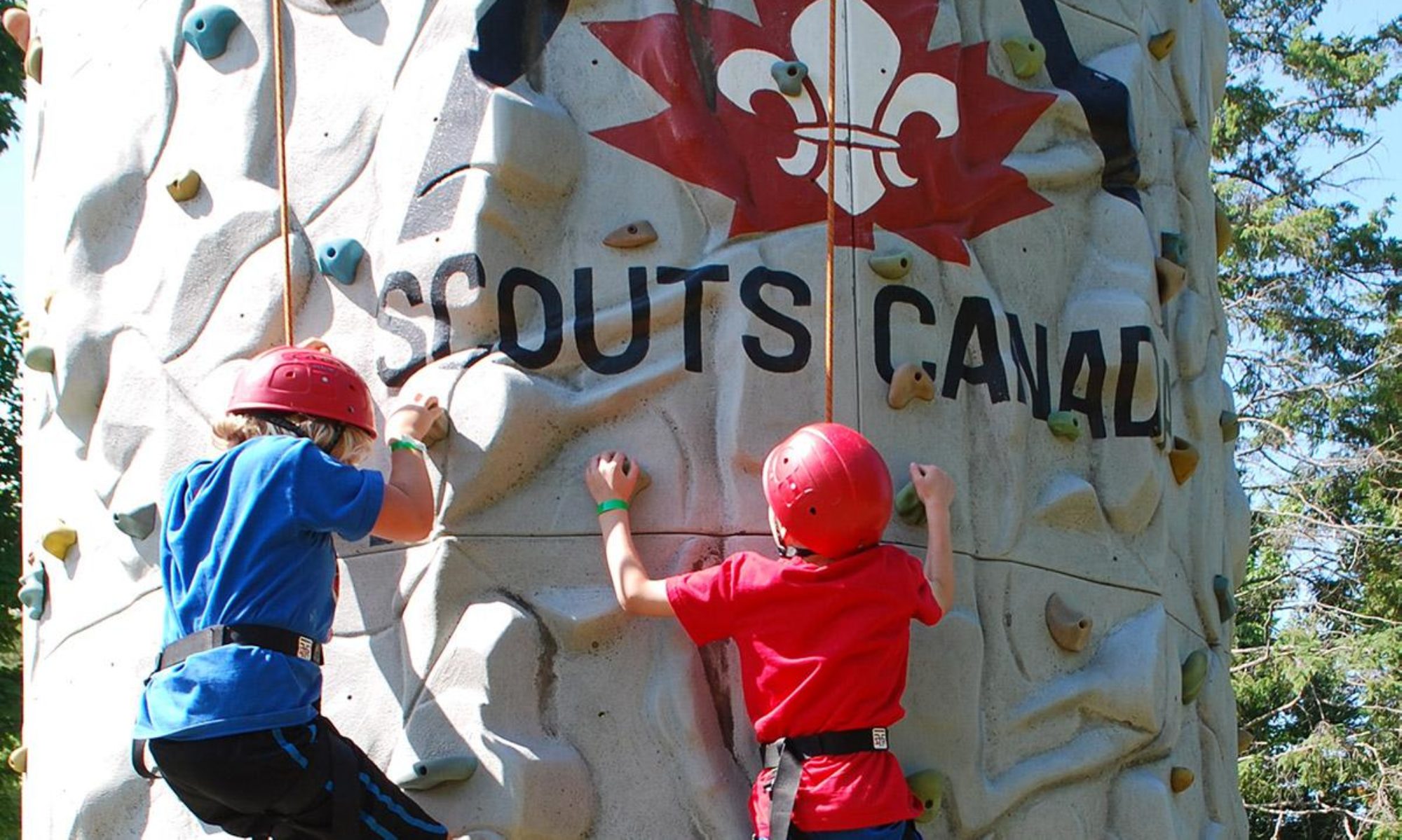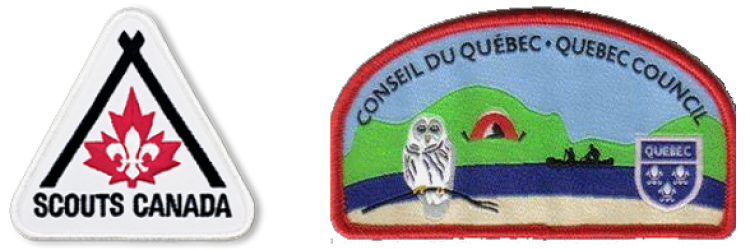Frequently Asked Questions
Q: If activities should be designed to eliminate, as much as is practical, the need to be less than 2 meters apart to prevent the need for PPE like face masks, what do we do if we need to help tie the shoelaces of a Beaver Scout or similar challenge. A: As with all safety and risk controls, they work as a system, no one barrier or control is designed to be used alone. If we design program as much as practical, screen for symptoms, use good hygiene practices, we will reduce the risk to acceptable levels within risk tolerance. The Scouter-in-Charge is responsible to reduce risk and contamination as much as reasonably practical, recognising that common-sense combined with flexibility and adaptability are as important to keep our youth safe while balancing the need to have fun.
Q: What would be a “reasonable” approach to inform all meeting attendees for the planned activity? A: At a minimum, all parents should be informed via email 2 days in advance of the planned activity. Ideally, an RSVP would enable the parent to share they have understood and confirmed and had an opportunity to ask any questions they may have. Other Scouting groups may also have regular virtual meetings, Facebook or other channels to engage their parents. Scouts Canada will be developing materials, including a standard template email / letter, to support section scouters engaging parents.
Q: If the activity site is public access such as a trail, park, etc. what are the expectations regarding taking attendance and other private citizens unrelated to Scouting who may be on the trail as well? A: If planning on using public spaces, this must be taken into account in preparation for the activity or meeting. Known confluences or ‘hot-spots’ where lots of other people will likely gather must be avoided. If there are areas in which other people are congregating, select a location which limits as much as practical potential transmission and enables as much as practical physical distancing. This should be discussed with the Group Commissioner in the planning and approval phase of the activity in advance and in anticipation of such.
Q: Am I required to submit a form or request approval from the Provincial Health Authority? A: At the time of writing (June 7th 2020), no provinces are mandating that workplaces or charity organizations submit a form for approval. The majority are requiring that a documented plan is available at any time but not submitted. This is the same for Scouts Canada ‘the business’ which has additional legal requirements for its employees.
Q: What is the rationale for limiting section meetings / activities to a maximum of two small teams (patrols) of 8 or fewer youth per patrol (maximum 16 youth per meeting)? A: This is not an exact science but a balanced risk-based approach that leverages practical considerations of working with youth and takes our cues from Provincial Health Operational Planning guidance for schools, day cares, outdoor activities and day camps. Guidance varies but in general proposes cohorts of 8 or 10 people, including staff. Practically speaking, the vast majority of our sections are less than 16 youth in size so this is not material for the majority of our 55,00 youth in 1500 groups. Where we do have sections larger than 16, the 16-youth maximum, split into 2 patrols, enables further reinforcement of the Canadian Path model and usage of the patrol method. This will make it easier for Scouters to be able to adapt program, manage risk controls in a more manageable way, as well provide reassurance to parents that their youth can experience Scouting safely. The Two-Scouter rule must always be in effect and maintained.
Q: The Standard requires all youth, volunteers and family members participating in activities to be screened for symptoms before entering the activity area. How are we meant to do this? Temperature checks? Questionnaire? A: Scouts Canada has modified a set of questions that are used in provincial guidance for Scouters to use. No temperature checks or physical checks are required.
Q: What is the definition of Vulnerable or ‘at-risk’ persons? A: This definition varies slightly by province, but in general they all follow the Federal Government definitions. For the purposes of Scouts Canada it includes anyone who is:
- an older adult (highest risk are adults > 60 years of age)
- at risk due to underlying medical conditions (e.g. heart disease, hypertension, diabetes, chronic respiratory diseases, cancer)
- at risk due to a compromised immune system from a medical condition or treatment (e.g. chemotherapy)
- from https://www.canada.ca/en/public-health/services/publications/diseases-conditions/vulnerable-populations-covid-19.html
Q: If sections follow each other into same area will cleaning be required between sections? A: Yes. It is necessary to clean all surfaces, equipment before and after use to reduce the chance of cross-contamination and disease transmission. Combined with hand washing this is the best prevention for transmission.
Q: Why is Colony (Beaver Scout) overnight camping prohibited during a pandemic? A: Given the inherent challenges associated with risk management for young children, Scouts Canada has taken a prudent, risk-balanced approach to limit Colony (Beaver) activities to day events only at this time. Typically, Beavers would be reliant on significant support including preparation of meals, shared accommodation, provision of indoor (or weather-resistant) back-up facilities and a higher-level of oversight.
Q: What is the rationale for permitting 2 or 3 youth to use a tent for camping? Why is this considered an acceptable risk (As Low As Reasonably Practical) if combined with other risk controls in place: screening and hygiene. A: Combined with effective additional risk controls, specifically, hand washing, hygiene, cleaning, and screening and given the fact that children are at a much lower risk of developing COVID-19, the risk associated with 2 or 3 youth sharing a tent is within risk tolerance levels. This takes into consideration the practical application of camping for young people, the provision of materials, shared cooking stoves etc. while balancing risk to reasonable levels. Parents should be informed of camping sleeping arrangements before providing approval of their youth to attend and, as required, modifications must be made to accommodate if the parent or youth is uncomfortable. Adults may not share tents.
Q: If we are to permit 2 or 3 youth to share a tent for camping, can they also share a stove and other cooking materials? A: Sharing of equipment should, as much as practical, be minimized. However, it is recognised that if other risk controls are effective and in place and sharing is maintained between a 2 or 3 youth only, the risk within reasonable risk tolerance. Food and drink sharing is prohibited, but sharing a stove, a lightweight cooking pan, a tarp or water filter if other controls are maintained is permitted. If 2 or 3 youth do share equipment or a tent, this should be considered the meeting, day or activity “social bubble’ for the duration of the adventure. Mixing of ‘social bubbles’ is to be avoided.
Q: How are we to go camping with our Troop if we are required to eliminate or minimise food provision? A: Cooking on shared ‘base-camp’ stoves is not permitted, but using lightweight stoves in small “social-bubbles” of 2 or maximum 3 youth is a great way for the youth to practice the Outdoor Adventure Trail & Camping Skills. The youth can also develop their meal-planning skills, practice cooking new menus and be self-contained: planning, purchasing, carrying, storing, cooking, cleaning, and eating their own meals. For emergency purposes, you may want to consider having individually packaged food items on hand. No buffet-style, shared cooking for the fall – a great way to experience Scouting at its best.
Q: Will Scouts Canada be providing a standard template or a revised Safe Scouting Form for the purposes of attendance to aid potential contact tracing? A: Yes. This is in development including reviewing the capability of including in the Scout Safe App. Q: What cleaning is required for COVID-19, will Scouts Canada develop a standard, or the standard in force at the facility we are using? Does this have to be done by the professionals? A: Yes, Scouts Canada will be providing further guidance but in general, the best practice is to refer to Provincial or Federal Health Authorities, and example of which is: http://www.bccdc.ca/Health-Info-Site/Documents/CleaningDisinfecting_PublicSettings.pdf
Q: How do we plan, and possibly enforce, a 16-youth maximum for in-person activities, to keep participation inclusive? A: Many of the activities we run for Scouting, as well as those we participate in outside, have restrictions on number of attendees. The Section, in conjunction with the Group Commissioner as appropriate, should discuss this during the planning phase and communicate openly to parents and youth the restrictions, limitations and the why. We will always prioritise youth safety and have risk controls in place to manage risk levels within acceptable tolerance levels.
Q: Drop off and pick up can be chaotic times at the best of times, as parents accompany youth to the meeting from the car. We would benefit from a process where parents pull up and youth are released from the parents in a defined manner with social distancing in mind. Maybe a directional flow in the parking lot with a designated reception scouters screening and guiding youth.? A: To aid this process, Scouts Canada will be providing further guidance and a generic template example of how to manage drop-off and pick-up procedures as well as attendance / sign-in that maintains physical distancing. Groups will be strongly encouraged to modify these for their local situation and conditions.

